Hokuto’s Ten Keywords
Research
Research
keywords015th Generation
The production of Bunashimeji began at Hokuto in 1989. Since then we have pursued even better Bunashimeji through breeding. Currently, our Bunashimeji are in their fifth generation. (Counting only commercialized breeds.) In addition to guaranteeing deliciousness, at Hokuto we also promote the creation of better quality mushrooms.
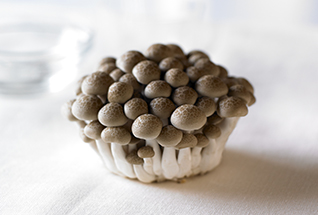
Learn More
Hokuto’s eryngii, our flagship product, are in their third generation, maitake third generation, and bunapi first generation. In addition, mushrooms undergoing research for future commercialization are being developed further every day.
keywords02Approximately 10,000 Strains
There are approximately 10,000 strains of mushrooms stored at low temperatures in Hokuto’s Mushroom General Research Institute. These comprise superior breeds, obtained through the collection of wild mushrooms and breeding, being stored as genetic resources.
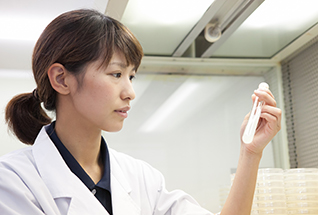
Learn More
Wild mushrooms are gathered from all over Japan. Although some mushrooms cannot be eaten, for Hokuto’s researchers, they are invaluable research materials used for investigating useful bioactive substances.
keywords03Next Generation
At the Hokuto Mushroom General Research Institute, effort is also put into the development of next generation mushrooms that will succeed our flagship products. We have been successful in the cultivation of honshimeji (Lyophyllum shimeji), previously said to be difficult, have registered it as a new breed and are currently conducting trial cultivation & marketing.
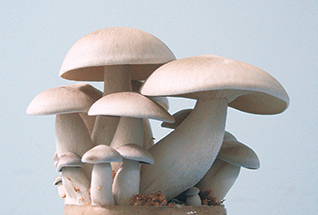
Learn More
In addition to new breed development, we also embark on various mushroom-related research tasks, having achieved results regarding evidence related to mushrooms’ bioactive function.
Corporate efforts
Corporate efforts
keywords04Recycle
Mushroom culture medium uses raw plant materials that can be recycled in fields and orchards as compost following harvesting. In addition, broken or old polypropylene jars used in the cultivation of mushrooms are recycled in our factory as raw materials for containers and caps.
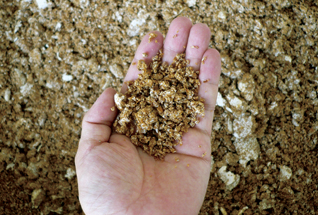
Learn More
Post-harvest mushroom culture medium contains fungal filaments, making for a high quality feed that is recycled as fodder for cows and other livestock.
keywords05Research Scholarships
Scholarships have been granted to researchers every year since the founding of the Hokuto Bio-science Promotion Foundation in June 1997. As part of our larger contribution to society, these scholarships aim to support the exchange and spread of biotechnology techniques, and assist the development of domestic industry. To date, 401 researchers have been granted funds totaling over 270 million yen (approx. US$2.0 million).
We will continue to support the development of biotechnology techniques through the Hokuto Bio-science Promotion Foundation.
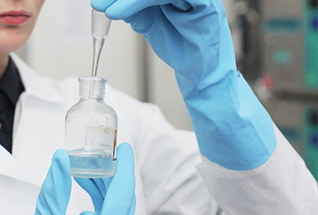
Learn More
Once a year, we hold a mushroom observation meeting at the foundation, to which we invite a guest lecturer. Hokuto’s researchers also attend an expert discussion event, involving the lively exchange of academic ideas and opinions.
About production
About production
keywords06Approximately One-third
Hokuto’s eryngii, our flagship product, account for approximately 46% of the total national eryngii production output. Our Bunashimeji accounts for around 34%, maitake around 26%, and bunapi 100%, due to it being a Hokuto original product. (From the 2018 Annual Report on Special Use Forest Product Production Trends)
In order to provide safe and healthy Hokuto mushrooms for everyone’s dinner table, we have established mushroom production centers around the country, manufacturing large quantities of mushrooms.
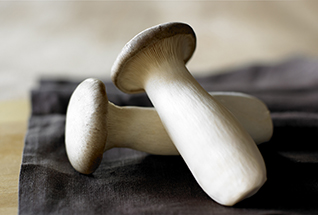
Learn More
The 2017 production output of Hokuto’s independently developed bunapi was approximately 1,600 ton. We are working towards a future in which mushrooms are even commonplace at the dinner table.
keywords07Nationwide
Hokuto mushrooms are delivered across Japan, from Kyushu in the south to Hokkaido in the north, from mushroom production centers across 21 locations, including 34 factories. By establishing mushroom production centers nationwide, we are constructing production centers nearby to our consumers, and delivering mushrooms to dinner tables through local production that emphasizes freshness.
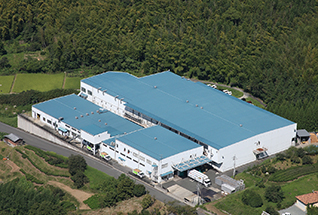
Learn More
Each day approximately 2.5 million 100-g packs of mushrooms are harvested and shipped from our centers nationwide. Through the reliable supply of high quality mushrooms, we are propping up dinner tables around the country.
keywords084S
“4S” refers to the four Japanese words “seiri” (sorting), “seiton” (orderliness), “seiso” (cleaning), and “seiketsu” (hygiene). “Hygiene No.1” is the motto at our mushroom production centers, where cleaning and hygiene management is performed thoroughly. As a part of this, the “4S check” is indispensable.
Hokuto mushrooms are cultivated in hygienic environments and receive high praise for their ability to keep well.
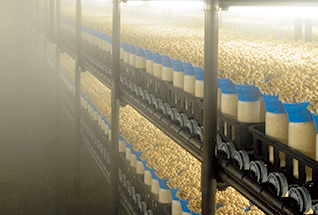
Learn More
Machines that come into contact with mushrooms are disassembled into parts and cleaned daily, without fail. Though cleaning alone takes several hours, it is an essential process that cannot be skipped, even for one day.
About management
About management
keywords09The Five Satisfactions
The “Five Satisfactions” are published within the Hokuto Company Policy. They comprise “consumer satisfaction”, “client satisfaction”, “community satisfaction”, “shareholder satisfaction”, and “employee satisfaction”. Each satisfaction is closely related to the others, and indispensable. As Hokuto’s corporate philosophy, they provide essential guidelines for our business activities.
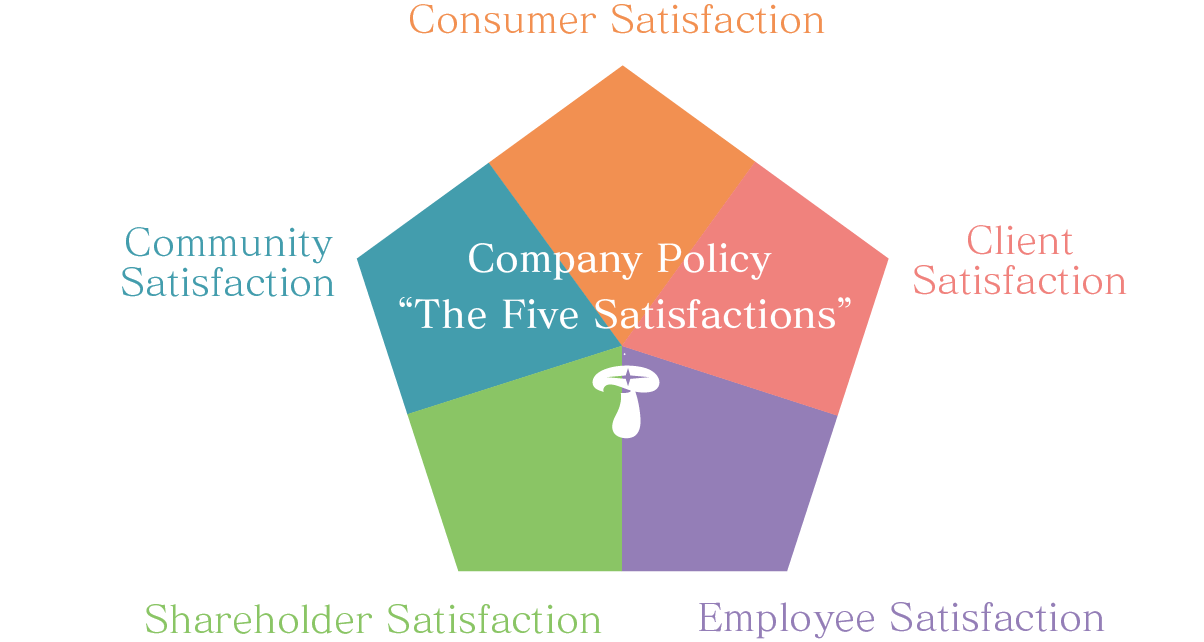
Learn More
Hokuto is a comprehensive mushroom corporation that performs everything from developmental mushroom research using proprietary biotechnology techniques, to the manufacturing and sales of mushrooms and the development of manufacturing materials. We continually strive to provide a rich, healthy dietary culture not only in Japan, but to people all over the world, and to be the “world’s mushroom store” of Japan.
keywords10Stability
At Hokuto, we aim for stable dividend distribution. Our basic policy is to distribute dividends of surplus to shareholders twice a year, as interim and term-end dividend payments.

Learn More
We will continue to position the return of profits to shareholders as a principal management objective, making proactive efforts towards this such as increasing dividends and stock splitting.